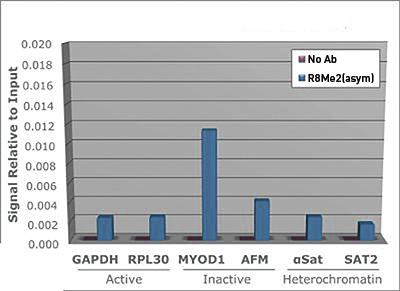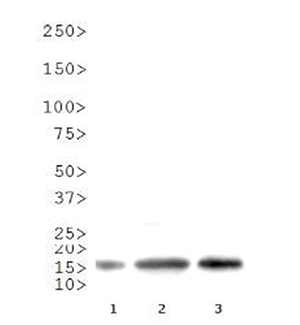Chromatin is the arrangement of DNA and proteins in which chromosomes are formed. Correspondingly, chromatin is formed from nucleosomes, which are comprised of a set of four histone proteins (H2A, H2B, H3, H4) wrapped with DNA. Chromatin is a very dynamic structure in which numerous post-translational modifications work together to activate or repress the availability of DNA to be copied, transcribed, or repaired. These marks decide which DNA will be open and commonly active (euchromatin) or tightly wound to prevent access and activation (heterochromatin). Common histone modifications include methylation of lysine and arginine, acetylation of lysine, phosphorylation of threonine and serine, and sumoylation, biotinylation, and ubiquitylation of lysine. In particular, dimethylation of H3 Arg8 (H3 R8Me2) is known as a mark of transcriptional repression. The protein arginine methyltransferases PRMT5 and PRMT2 can both methylate Arg8, with PRMT2 specifically methylating in an asymmetric manner. In addition, asymmetric dimethylation of Arg8 inhibits H3K9 methylation by G9a, but symmetric Arg8Me2 does not.




